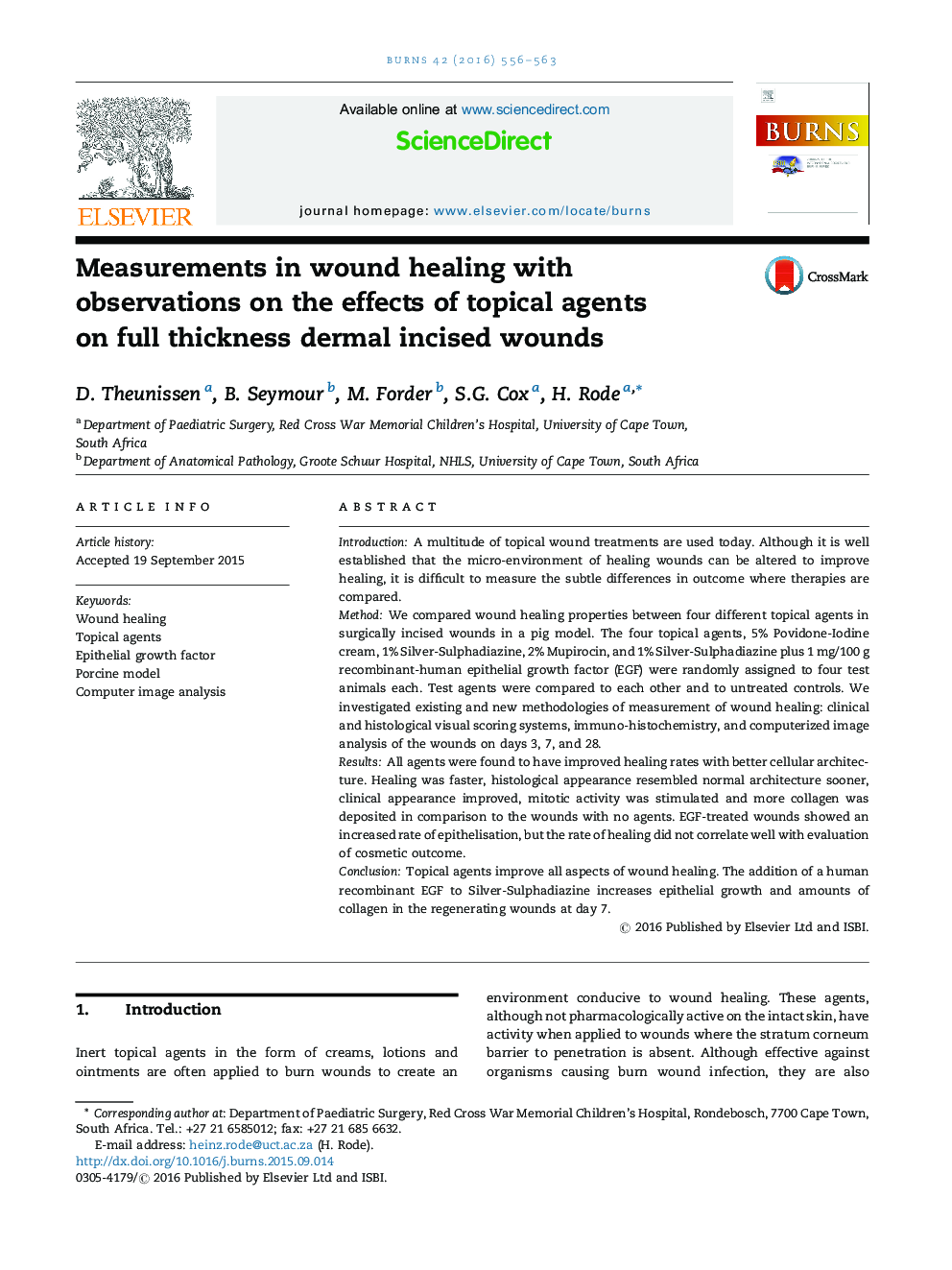| Article ID | Journal | Published Year | Pages | File Type |
|---|---|---|---|---|
| 3104132 | Burns | 2016 | 8 Pages |
•Topical agents are beneficial to wound healing.•EGF-treated wounds show increased epithelisation.•Computerized image analysis can be used to assess wound healing.
IntroductionA multitude of topical wound treatments are used today. Although it is well established that the micro-environment of healing wounds can be altered to improve healing, it is difficult to measure the subtle differences in outcome where therapies are compared.MethodWe compared wound healing properties between four different topical agents in surgically incised wounds in a pig model. The four topical agents, 5% Povidone-Iodine cream, 1% Silver-Sulphadiazine, 2% Mupirocin, and 1% Silver-Sulphadiazine plus 1 mg/100 g recombinant-human epithelial growth factor (EGF) were randomly assigned to four test animals each. Test agents were compared to each other and to untreated controls. We investigated existing and new methodologies of measurement of wound healing: clinical and histological visual scoring systems, immuno-histochemistry, and computerized image analysis of the wounds on days 3, 7, and 28.ResultsAll agents were found to have improved healing rates with better cellular architecture. Healing was faster, histological appearance resembled normal architecture sooner, clinical appearance improved, mitotic activity was stimulated and more collagen was deposited in comparison to the wounds with no agents. EGF-treated wounds showed an increased rate of epithelisation, but the rate of healing did not correlate well with evaluation of cosmetic outcome.ConclusionTopical agents improve all aspects of wound healing. The addition of a human recombinant EGF to Silver-Sulphadiazine increases epithelial growth and amounts of collagen in the regenerating wounds at day 7.
